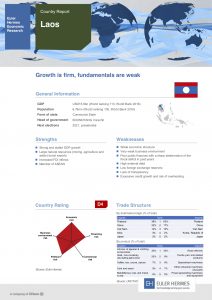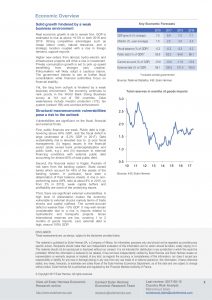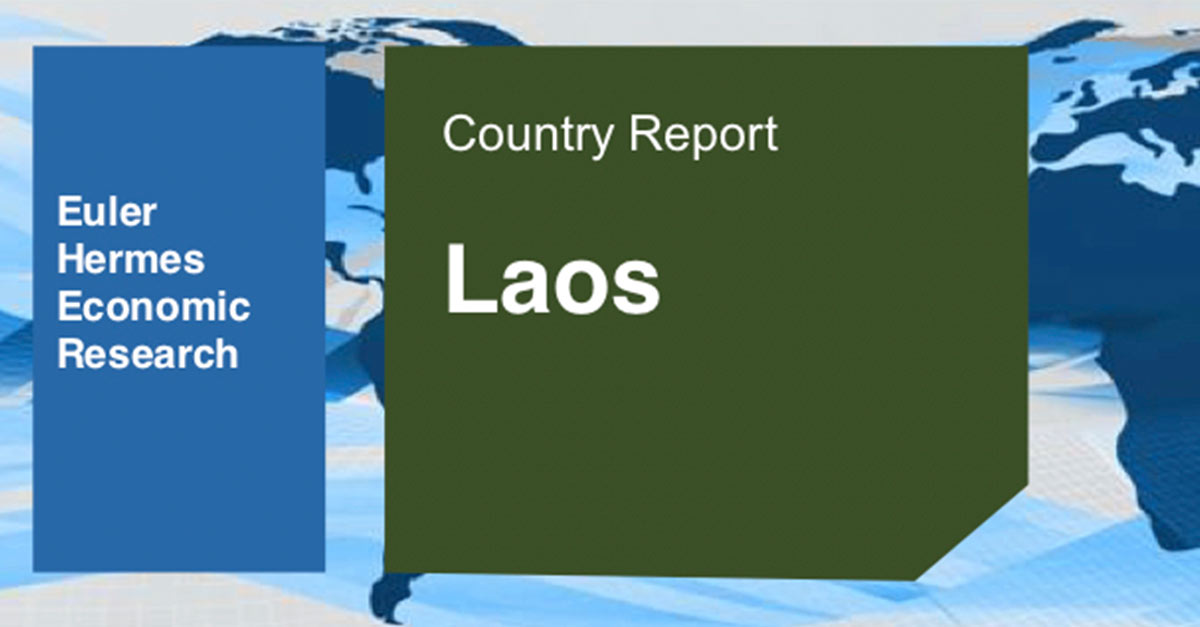Euler Hermes, an Allianz company, has released a brief country economic report on Laos. The following is an excerpt from the report:
ECONOMIC OVERVIEW
Solid growth hindered by a weak business environment
Real economic growth is set to remain firm. GDP is estimated to rise at above +6.5% in both 2018 and 2019. Strong competitive advantages such as cheap labour costs, natural resources, and a strategic location coupled with a rise in foreign demand, support exports. Higher new orders from abroad, hydro-electric and infrastructure projects will drive a rise in investment. Private consumption growth is set to pick up speed benefitting from stronger jobs creation. Policymakers will likely adopt a cautious stance. The government intends to aim at further fiscal consolidation while financial authorities focus on financial stability. Yet, the long term outlook is hindered by a weak business environment. The economy continues to rank poorly in the World Bank Doing Business survey at 141 out of 190 countries. Clear weaknesses include investor protection (172), tax system (ranked 156) and contract enforcement.
Structural macroeconomic vulnerabilities pose a risk to the outlook
Vulnerabilities are significant on the fiscal, financial and external fronts.
First, public finances are weak. Public debt is high, hovering above 60% GDP, and the fiscal deficit is large (estimated at -5.2% GDP in 2017). Debt sustainability risk is elevated due to: (i) poor fiscal management; (ii) legacy issues in the financial sector (state owned bank undercapitalization and public bank, e.g.); and (iii) exposure to external financing conditions with external public debt accounting for almost 80% of total public debt.
Second, the financial sector is fragile. Pockets of risk stem from the banking system. State owned banks which account for 45% of the assets of the banking system, in particular, have seen a deterioration of their balance sheets. A rise in non-performing loans (NPL ratio at about 8% in 2015, up from 2% in 2012), weak capital buffers and profitability are some of the underlying issues.
Third, there are significant external vulnerabilities. A high level of dollarization makes the economy vulnerable to external shocks namely terms of trade shocks and capital outflows. The current-account deficit is weaker than -10% GDP. It may well remain considerable due to a rise in imports related to hydroelectric and transports projects. Gross international reserves are low, covering 1 to 2 months of goods imports. Last, external debt is high, around 100% GDP.
Strengths
- Strong and stable GDP growth
- Large natural resources (mining, agriculture and water) boost exports
- Increased FDI inflows
- Member of ASEAN
Weaknesses
- Weak economic structure
- Very weak business environment
- Poor public finances with a sharp deterioration of the fiscal deficit in past years
- High external debt
- Low foreign exchange reserves
- Lack of transparency
- Excessive credit growth and risk of overheating


The full report is available here.



